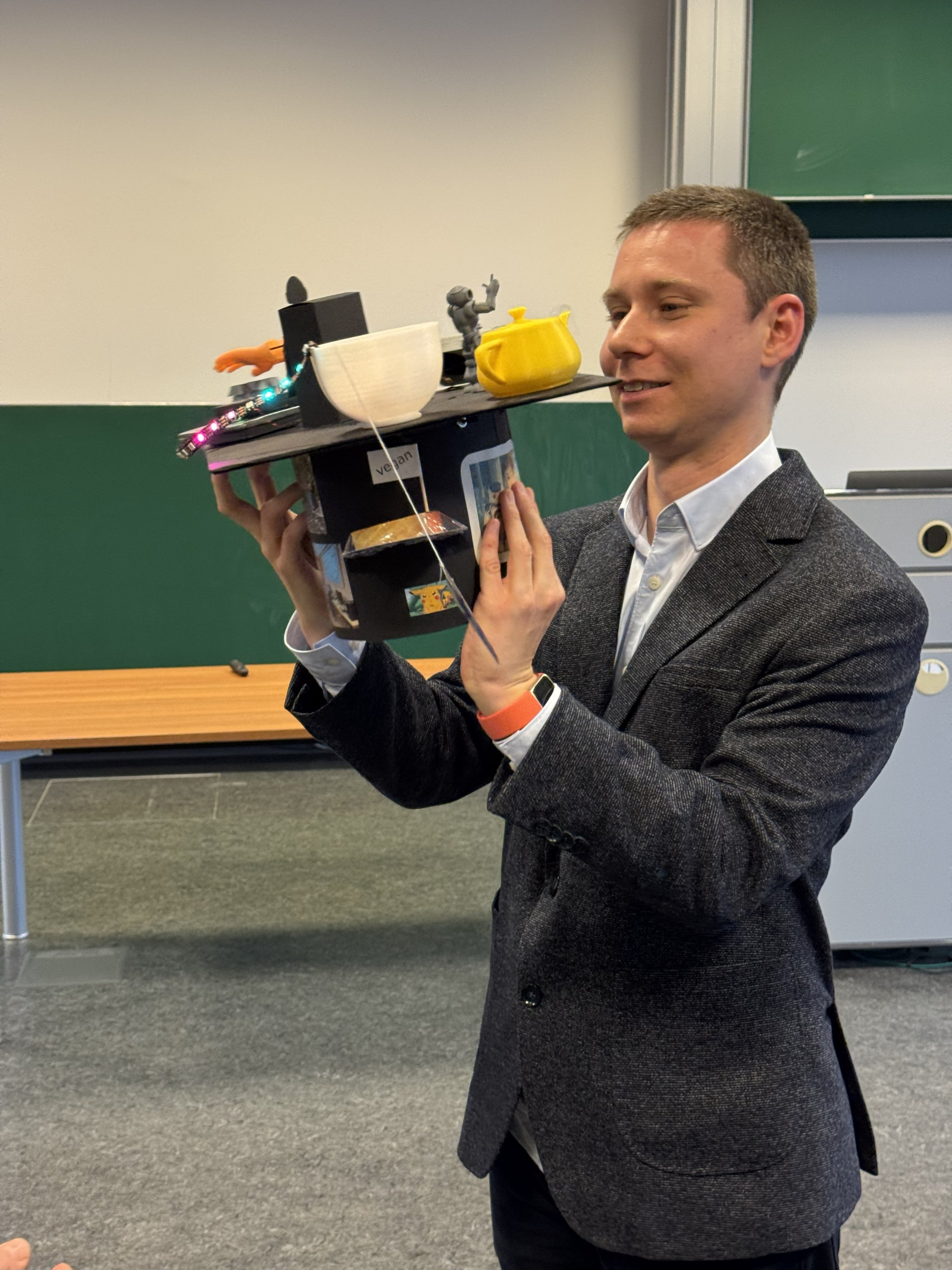November 12, 2025
PhD defense of Felix Weiglhofer
Software tracks particle collisions
Felix Weiglhofer's dissertation, supervised by FIAS Senior Fellow Volker Lindenstruth, addresses the question of how large amounts of data can be processed in real time. It enables rare particle interactions to be recorded and analyzed—and thus provides insight into the microseconds after the Big Bang.
When particles collide at facilities such as the Large Hadron Collider particle accelerator at the European Organization for Nuclear Research (CERN), the detectors generate data streams exceeding one terabyte per second. To handle this overwhelming data flow, the doctoral student developed specialised software that uses of graphics processing units (GPUs) to dramatically speed up data processing.
The work includes GPU-accelerated algorithms for reconstructing particle tracks from detector signals, which have been successfully applied both in the ALICE (A Large Ion Collider Experiment) experiment at CERN and the upcoming CBM (Compressed Baryonic Matter) experiment at GSI (Gesellschaft für Schwerionenforschung) near Darmstadt, enabling real-time analysis of particle collisions.
This work enables physicists to capture and analyze rare particle interactions that would otherwise be lost, contributing to our understanding of the fundamental nature of matter and the conditions that existed microseconds after the Big Bang.
Weiglhofer is now continuing his doctoral work as a postdoc at CERN's ALICE experiment.
